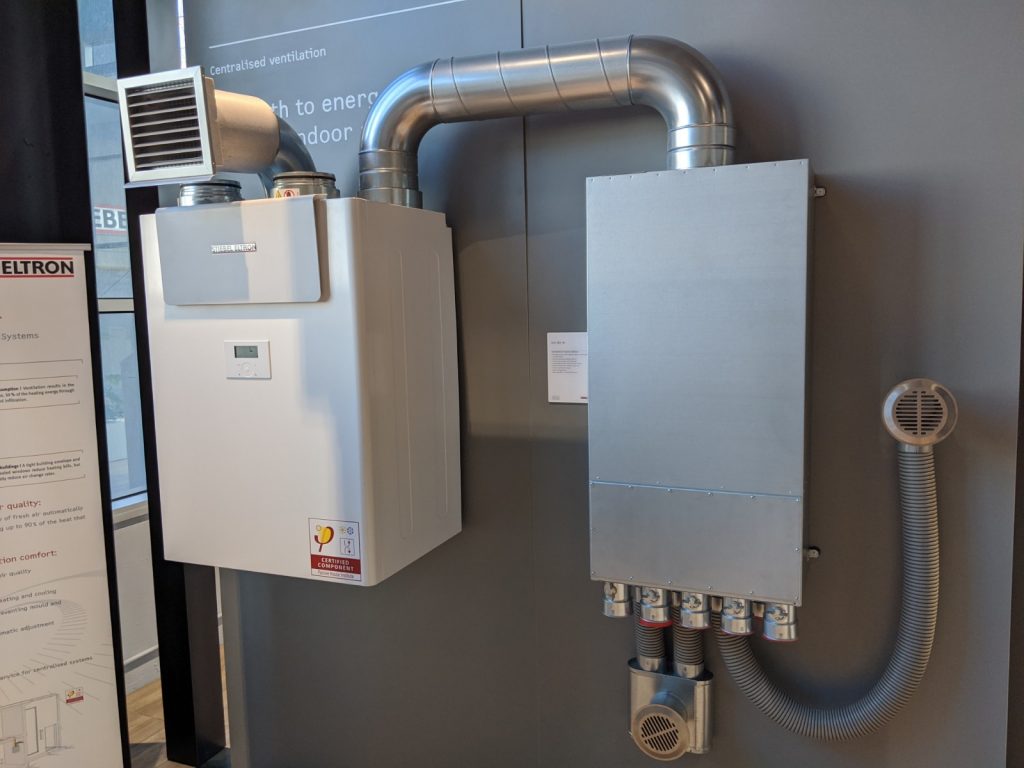The All-Inclusive Guide to the Uses of Heat Recovery Ventilation in Modern Buildings
Heat Recovery Ventilation (HRV) systems stand for a substantial improvement in building innovation (HRV Heat Recovery Ventilation). They provide an approach for exchanging stagnant interior air with fresh outdoor air while lessening power loss. This strategy not just enhances indoor air quality yet additionally adds to energy performance in both property and business structures. Comprehending the numerous applications and benefits of HRV can expose its vital duty in contemporary style and sustainability initiatives. The implications of this modern technology are worth checking out even more
Recognizing Heat Recovery Ventilation Systems

Many modern-day structures prioritize energy performance, understanding warmth recuperation ventilation (HRV) systems is essential for optimizing interior air top quality and reducing power usage. HRV systems work by transferring warmth from stagnant indoor air to inbound fresh air, properly keeping comfy indoor temperature levels while lessening power loss. These systems are composed of a warm exchanger, followers, and ductwork that promote the flow of air. During winter, HRV devices capture and reuse heat from the outbound air, while in summertime, they can aid cool incoming air. By constantly trading air, HRV systems likewise minimize moisture and the focus of indoor pollutants. Appropriate installment and upkeep of HRV systems are vital for their performance and efficiency in boosting total structure efficiency and comfort.
Advantages of Heat Recovery Ventilation
Heat recovery ventilation systems offer countless benefits that improve both power efficiency and indoor air quality in modern-day buildings. By catching and recycling power from exhaust air, these systems significantly decrease cooling and heating expenses, leading to reduced power consumption. They maintain a consistent flow of fresh exterior air, minimizing the danger of indoor air pollutants and irritants. This constant exchange helps manage humidity levels, stopping mold and mildew growth and making certain a healthier living environment. Additionally, HRV systems add to sustainability objectives by reducing total carbon footprints. Their capability to optimize air flow without sacrificing thermal comfort makes them a beneficial addition to contemporary structure style, promoting both financial and environmental advantages.
Applications of HRV in Residential Buildings
As house owners progressively focus on energy performance and interior air quality, the applications of warmth recovery air flow (HRV) systems in household buildings have become extra widespread. HRV systems are especially helpful in snugly secured homes, where preserving fresh air flow is necessary for stopping moisture build-up and indoor contaminants. They effectively transfer warmth from outward bound stagnant air to incoming fresh air, decreasing energy prices connected with heating & cooling. In addition, HRVs can enhance convenience levels by regulating moisture and temperature level. They are additionally adaptable for various residential styles, including single-family homes and multi-unit buildings. Overall, integrating HRV systems supports lasting living practices while making sure a much healthier indoor atmosphere for residents.
HRV in Industrial and Commercial Settings
In business and industrial setups, the execution of warmth recovery air flow (HRV) systems has actually ended up being progressively crucial for enhancing energy effectiveness and preserving air top quality. These systems successfully transfer warmth from exhaust air to inbound fresh air, reducing the need for added home heating or cooling. This not just reduces energy prices but likewise adds to sustainability efforts. Industries such as production, warehousing, and office complex benefit significantly from HRV systems, as they help control temperature level and moisture levels, ensuring a comfy and effective environment. In addition, HRV systems aid in removing impurities visit this website and excess dampness, improving interior air top quality. As guidelines around air high quality end up being more stringent, the adoption of HRV technology is most likely to grow, making it an important part of modern commercial and commercial framework.
Future Fads in Heat Recovery Ventilation Modern Technology

Regularly Asked Questions
How Does Heat Recovery Ventilation Influence Indoor Air High Quality?
Heat recovery ventilation significantly enhances interior air high quality by constantly exchanging stagnant interior air with fresh outdoor air while recouping energy. This procedure minimizes contaminants, keeps excellent humidity levels, and assures a healthier environment for passengers.
Can HRV Solutions Be Set Up in Existing Buildings?
HRV systems can undoubtedly be set up in existing buildings. Retrofitting may need modifications to ductwork and ventilation layouts, however it substantially improves energy effectiveness and interior air quality, making it a feasible option for older structures.
What Maintenance Is Required for HRV Equipments?

Exist Specific Climates Where HRV Is More Reliable?
Heat recovery ventilation systems are particularly effective in climates with substantial temperature level distinctions in between periods. These systems enhance power effectiveness by recuperating warmth from article exhaust air, making them ideal for both chilly and moderately cozy settings.
How Do HRV Solutions Affect Energy Expenses?
